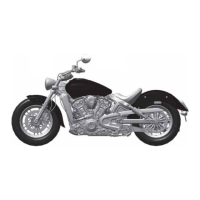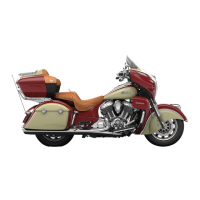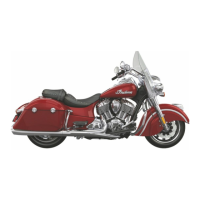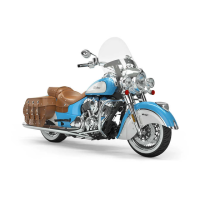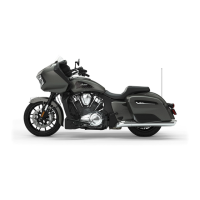Do you have a question about the Indian Motorcycle Scout and is the answer not in the manual?
Information on service procedures and warranty coverage details.
Guidelines for operating the motorcycle in countries other than the USA and Canada.
Guidance on how to use the rider's manual effectively for safe operation.
Essential guidelines for safe motorcycle operation and rider behavior.
Recommendations for wearing appropriate protective gear for rider safety.
Understanding weight limits to ensure motorcycle stability and safe handling.
Identification and description of the motorcycle's console components and controls.
Location and importance of the engine identification number for record-keeping.
Explanation and operation of various handlebar switches and controls.
Overview of the instrument cluster, including speedometer and indicator lamps.
Details on MFD modes, indicators, and settings for trip odometer, speed, etc.
Information on brake system operation, including ABS if equipped.
Procedure for checking critical electrical components before riding.
Comprehensive checklist for inspecting tires, fluids, brakes, and other vital components.
Step-by-step guide for checking and maintaining the correct engine oil level.
Guidelines for inspecting tire sidewalls, tread, and pressure for safe operation.
Procedures and precautions for the initial 500-mile engine break-in period.
Correct steps for starting the motorcycle's engine safely and properly.
How to shift gears smoothly while driving and stationary for optimal performance.
Techniques for applying brakes gradually and effectively for safe stopping.
Schedule and procedures for routine inspections, cleaning, and part replacement.
Detailed instructions for performing engine oil and filter changes.
Information on the cooling system, including coolant level inspection and maintenance.
Procedures for tire replacement, condition checks, and pressure adjustments.
Common causes and remedies for engine starting issues.
Solutions for engine performance issues like misfires or rough running.
Diagnosing and addressing causes of engine overheating.
Proper methods for washing the motorcycle to prevent damage.
Guidelines for cleaning and maintaining leather components for longevity.
Steps for preparing a suitable storage location to protect the motorcycle.
Key engine type, displacement, bore, stroke, and other performance data.
Details on wheel size, tire type, and related specifications.
Recommended fuel type, octane rating, and ethanol content for optimal performance.
Details of the two-year limited warranty coverage for motorcycle components.
Instructions on where and how to get warranty service for the motorcycle.
Information on the warranty specific to the motorcycle's emission control system.
| Transmission | 6-speed |
|---|---|
| Front Suspension | Telescopic Fork |
| Rear Suspension | Dual Shocks |
| Compression Ratio | 10.7:1 |
| Wheels | Cast Aluminum |
| Engine Type | Liquid Cooled V-Twin |
| Displacement | 1133cc |
| Horsepower | 100 hp |
| Torque | 72 ft-lbs |
| Fuel Capacity | 3.3 gallons |
| Seat Height | 25.6 inches |
| Bore x Stroke | 73.6mm |
| Fuel System | Electronic fuel injection |
| Front Brake | Dual 298mm discs with 2-piston calipers |
| Rear Brake | 298mm disc with single-piston caliper |
| Tires | Front: 130/90-16, Rear: 150/80-16 |
| Wheelbase | 61.5 inches |
| Peak Torque | 72 ft-lbs @ 5900 rpm |
